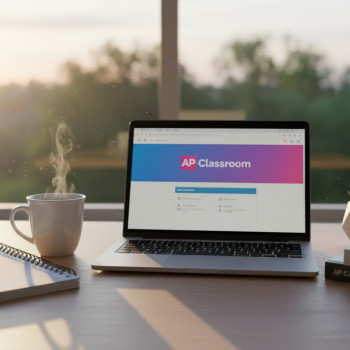Why Inference Questions Trip Up Even Strong Students
Ask any AP student which question type makes them hesitate, and inference questions will be in the top three. They look like they want a thoughtful interpretation—so students try to be clever. The result? Overreach: choosing answers that go beyond what the passage actually says.
Overreaching means making logical leaps that the text doesn’t support. It often happens for good reasons: a confident reading, background knowledge that seems relevant, or pressure from time. But on an AP exam—whether it’s English Language, Literature, History, or any subject that asks you to infer—the correct inference is the one the passage supports, not the one you think is true in the world at large.
A simple difference: Inference vs. Assumption
An inference is a conclusion that follows logically from textual evidence. An assumption is a belief you bring to the text that may or may not be supported. Learning to spot the line between them is the skill that turns guesswork into accuracy.

Start With the Passage: The Text Is the Test
AP scorers expect you to base your answers on the passage itself. No outside knowledge, no imaginative leaps. When you read an inference question, your first move should be to go back to the passage and find the sentence or pair of sentences that most directly relate to the question. Don’t answer from memory, and don’t answer from what you wish the passage had said.
Practice drill — the three-line rule
When an inference question appears, find the most relevant line(s) and limit your search window to about three lines above and below that spot. In many cases, the textual support lives nearby. This disciplined habit forces you to anchor interpretations to explicit language rather than to impressions.
How to Recognize Overreach — A Checklist
Before you select an answer, run it past this mental checklist. Each item reduces the risk of choosing an overstated inference.
- Does the answer introduce a new fact that isn’t in the passage?
- Does it depend on specialized knowledge the passage hasn’t provided?
- Is it stronger than the language in the passage (saying “always” when the passage says “sometimes”)?
- Would removing a single sentence in the passage destroy the connection between passage and answer?
- Does the answer prefer an emotional or moral judgment not implied by the author?
Examples of Overreach (and how to avoid them)
Seeing real examples helps. Imagine a short passage describing an exhausted factory worker who sighs and watches a clock. An inference question asks: “What can be inferred about the worker?”
- Overreaching answer: “The worker plans to quit next week.” — This projects a future action not supported by the text.
- Supported inference: “The worker is tired and eager for the shift to end.” — This sticks to observable cues: exhaustion and watchful attention to time.
Language Clues That Keep You Grounded
Authors use precise signals to hint at inferences. Train yourself to notice them and treat them as anchors.
- Modal verbs: Words like may, might, could, and seems soften claims. If the passage uses them, prefer answers that are similarly cautious.
- Qualifier adverbs: Words such as often, sometimes, rarely suggest probabilities, not certainties.
- Concessive phrases: Phrases like “although” or “while” indicate complexity; inferences that ignore the concession often overreach.
- Direct statements: If the author states a fact plainly, inferences that merely restate or gently extend that fact are usually safe.
Strategy: The Four-Step Inference Routine
Use this short, repeatable routine on test day. It’s fast, evidence-based, and reduces second-guessing.
- Spot — Identify the sentence(s) that the question targets.
- Quote — Mentally quote a short phrase that supports what you think the inference is.
- Compare — Compare each answer to your quote. Eliminate any answer that goes beyond the phrase.
- Choose — Pick the answer that matches both the language and the logical implication of the quote.
Why this routine works
It makes you behave like a careful editor of the passage rather than a commentator on the author’s life. AP graders reward textual fidelity. Every correct inference should be visibly linked to language in the passage; the routine builds that link quickly.
Common Pitfalls and How to Beat Them
Knowing common mistakes helps you recognize them under pressure.
Pitfall 1 — Reading the author’s biography into the text
Students sometimes use what they know about an author or period to strengthen an inference. This can help in essay writing where context matters, but for multiple-choice inference questions, it’s dangerous. Stick to what’s inside the passage.
Pitfall 2 — Emotional projection
Passages often convey emotion through tone or description, and it’s tempting to infer a moral judgment or dramatic motive. Ask yourself: does the text explicitly justify that emotion? If not, choose the milder, text-supportable option.
Pitfall 3 — Over-interpreting details
Small details are tempting to magnify—a single word or image may not carry the symbolic weight you give it. Unless the passage builds on that detail repeatedly, avoid symbolic leaps.
Use Comparative Thinking — Narrow Down with Purpose
When stuck between two answers, comparative thinking helps. Ask: which option requires fewer unstated assumptions? The one that does is usually correct. Inference questions reward parsimony—choose the answer that adds the least beyond the passage.
A table to practice parsimony
Use this quick table to evaluate answer choices during practice. Treat each cell as a mental checklist: fewer checks = safer choice.
| Answer Choice | Requires New Fact? | Depends on Outside Knowledge? | Stronger Than Text? | Likely Correct? |
|---|---|---|---|---|
| A | No | No | No | High |
| B | Yes | No | Yes | Low |
| C | No | Yes | Yes | Low |
| D | Yes | Yes | Yes | Very Low |
Practice That Builds Right Habits
Skills stick when practice simulates test conditions and focuses on process. Here are practical drills you can do in 20–40 minute blocks.
Drill 1 — One-line evidence
Take a passage and extract a single sentence. Write three plausible inferences based solely on that sentence; then for each inference, write a one-sentence justification using only the passage. This sharpens your ability to tether claims to evidence.
Drill 2 — The elimination game
When you practice multiple-choice questions, force yourself to eliminate two incorrect answers before you pick one. Articulate why each eliminated option overreaches—this trains you to spot the same patterns on the real exam.
Drill 3 — Speed with fidelity
Set a 12-minute timer for a short passage with 5 inference questions. The time pressure simulates the AP environment and teaches you to find relevant lines quickly without overthinking.
How Essays and Free-Response Use Inference Differently
In free-response sections, you’re allowed (and encouraged) to develop an argument. Still, your inferences must be rooted in the text. Use the same discipline: quote tightly, explain the inference, and avoid grand claims that the passage does not support. When you do this well, your essay sounds thoughtful rather than speculative.
Turn inference into evidence
When making a claim in an essay, follow it with a short quotation and a sentence that explains how the quote supports the claim. This makes your reasoning transparent to the reader (and to the AP reader).
Real-World Contexts That Help, Not Hurt
Outside knowledge can sometimes clarify an inference if the passage invites it—for example, recognizing a historical event referenced briefly. The key is invitation: only use outside knowledge when the passage signals that knowledge is relevant. Otherwise, it introduces the very overreach we’re trying to avoid.
When to use outside knowledge
- When the passage includes specific historical or scientific terms and expects the reader to know them.
- When an essay prompt explicitly asks you to bring in contextual knowledge.
- When the text names a public figure or event and ties the passage’s meaning to that reference.
Time Management: Don’t Rush the Reasoning
Time pressure causes students to choose the “sensible” but unsupported answer. Build a pacing plan that reserves time for careful evidence linkage.
- Skim the passage for structure—intro, pivot, conclusion—before reading questions.
- When an inference question appears, spend 20–40 seconds locating the textual anchor and another 10–20 evaluating answer choices against it.
- If you’re split between two answers, mark the question and return after finishing the passage to re-evaluate with fresh perspective.
How Tutoring and Smart Tools Can Help
Targeted practice accelerates progress. A good tutor—especially one offering 1-on-1 guidance—can pinpoint patterns in your mistakes and help you build habits that stick. Personalized tutoring can model the Four-Step Inference Routine in real time, offer immediate feedback, and design tailored study plans that address individual weaknesses.
Adaptive tools that provide AI-driven insights can also highlight when you’re overreaching by analyzing your answer patterns and showing you frequent error types. For students preparing for AP exams, combining expert tutors with technology—like Sparkl’s personalized tutoring that offers tailored study plans, expert tutors, and AI-driven insights—can reduce overreach and build confidence under timed conditions.
Sample Passage Walkthrough
Here’s a short, guided example to practice the method. Read the mini-passage, then follow the inference routine.
Mini-passage: “The town square filled slowly as the church bell rang. Maria stood at the edge of the crowd, folding and unfolding her hands. Her eyes kept returning to the door of the old bakery, where a single chair sat empty on the porch.”
Question:
What can be reasonably inferred about Maria?
- Overreach option: “Maria is waiting for someone who has died recently.” — Too specific and introduces a fact not in the passage.
- Supported inference: “Maria is waiting for someone or anticipating an arrival.” — Supported by action words: watching the bakery door, folding hands, and focus on an empty chair.
Why the supported inference works: the passage gives behavioral evidence of waiting and focused attention. It doesn’t provide information about why she’s waiting, so any answer that supplies a motive beyond anticipation is overreaching.
Tracking Progress: How to Measure Improvement
Improvement on inference questions is measurable and encouraging when you track it properly.
- Record accuracy on inference questions separately from other question types.
- Note which elimination reasons you most often miss (introducing outside facts, reading tone incorrectly, etc.).
- Retake similar sets after two weeks to see if the error pattern diminishes.
Sample weekly tracking table
| Week | Inference Accuracy | Most Common Error | Action Taken |
|---|---|---|---|
| 1 | 60% | Overreaching with outside knowledge | Practice drills: One-line evidence |
| 3 | 78% | Occasional emotional projection | Elimination game practice, tutor review |
| 6 | 89% | Minor pacing issues | Timed practice sets |
Final Thoughts: Be Boldly Accurate, Not Boldly Speculative
Inference questions reward restraint and clarity. The best answers are often the most modest ones—those that reflect what the passage says without trying to be clever. Develop the habit of tying every inference to a short, explicit piece of text. Practice regularly with focused drills, track errors, and consider targeted help if you hit a plateau. A few sessions of 1-on-1 guidance with an experienced tutor—supported by personalized study plans and diagnostic insights—can transform hesitation into confidence.
A closing pep talk
You’re not trying to read an author’s mind; you’re trying to read their words with precision. Train your eye to find the anchor, your mind to resist the siren song of speculation, and your pencil to point back to the passage. Over time, what felt like cautiousness becomes speed and accuracy. That quiet discipline is the secret weapon of top AP scorers.

Quick Reference: Inference Question Checklist
- Locate the textual anchor (3-line rule).
- Quote or paraphrase the supporting line aloud or in your head.
- Eliminate answers that add facts or rely on outside knowledge.
- Prefer cautious language that mirrors the passage.
- If stuck, mark and return with fresh eyes.
Keep practicing with intention. With the right habits, inference questions stop being traps and become predictable opportunities to show your careful reading. Good luck—you’ve got this.



















No Comments
Leave a comment Cancel